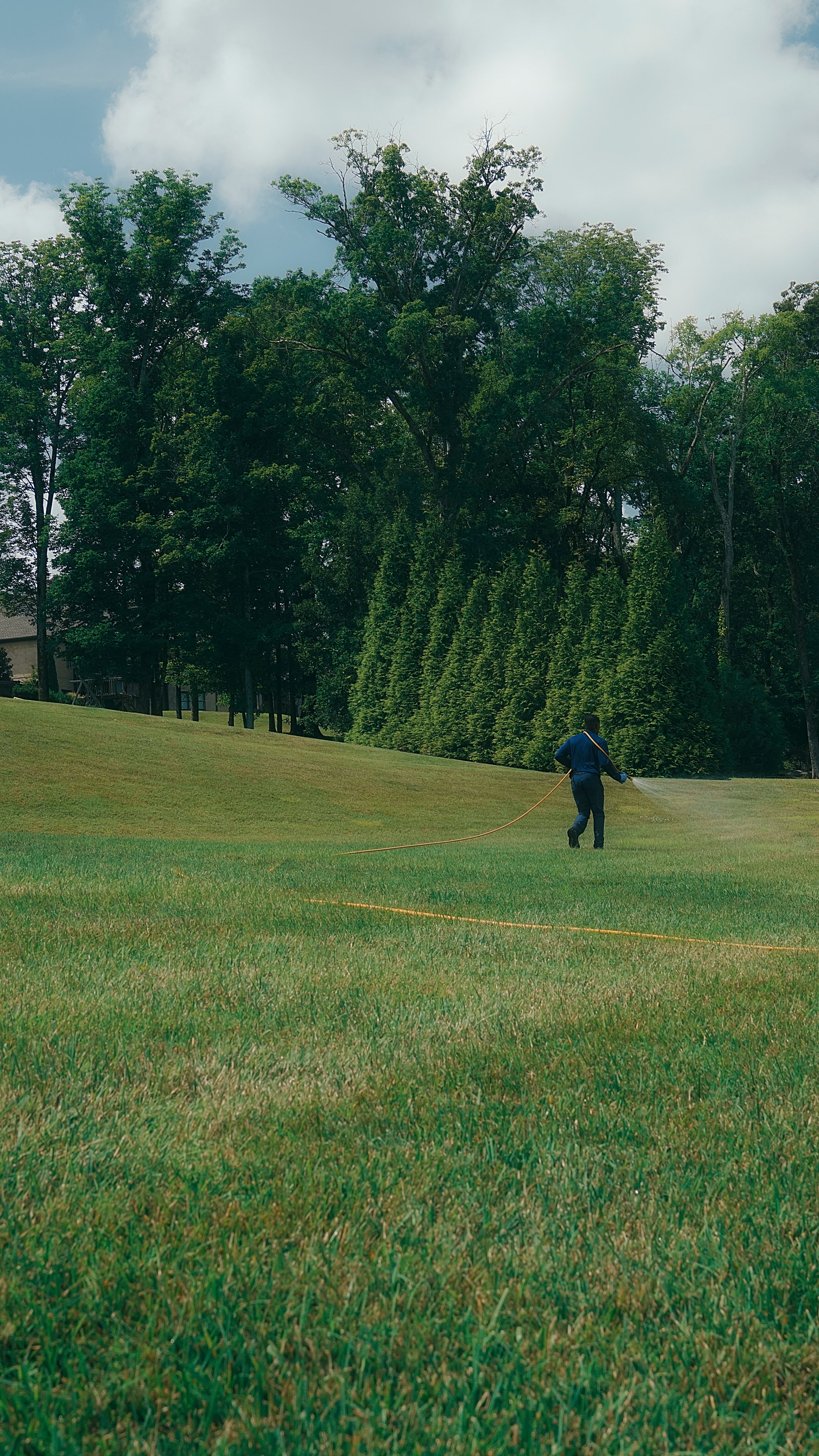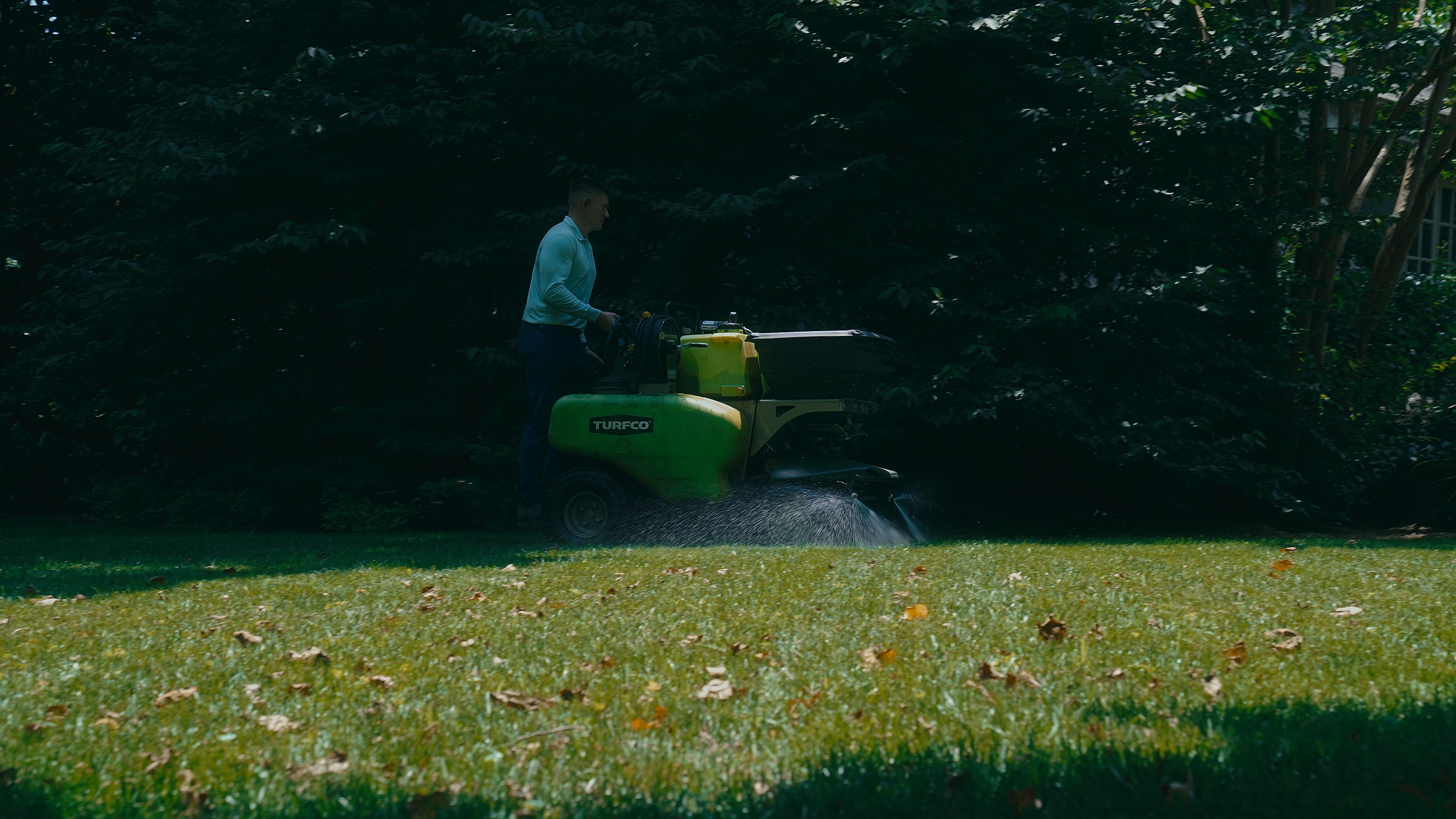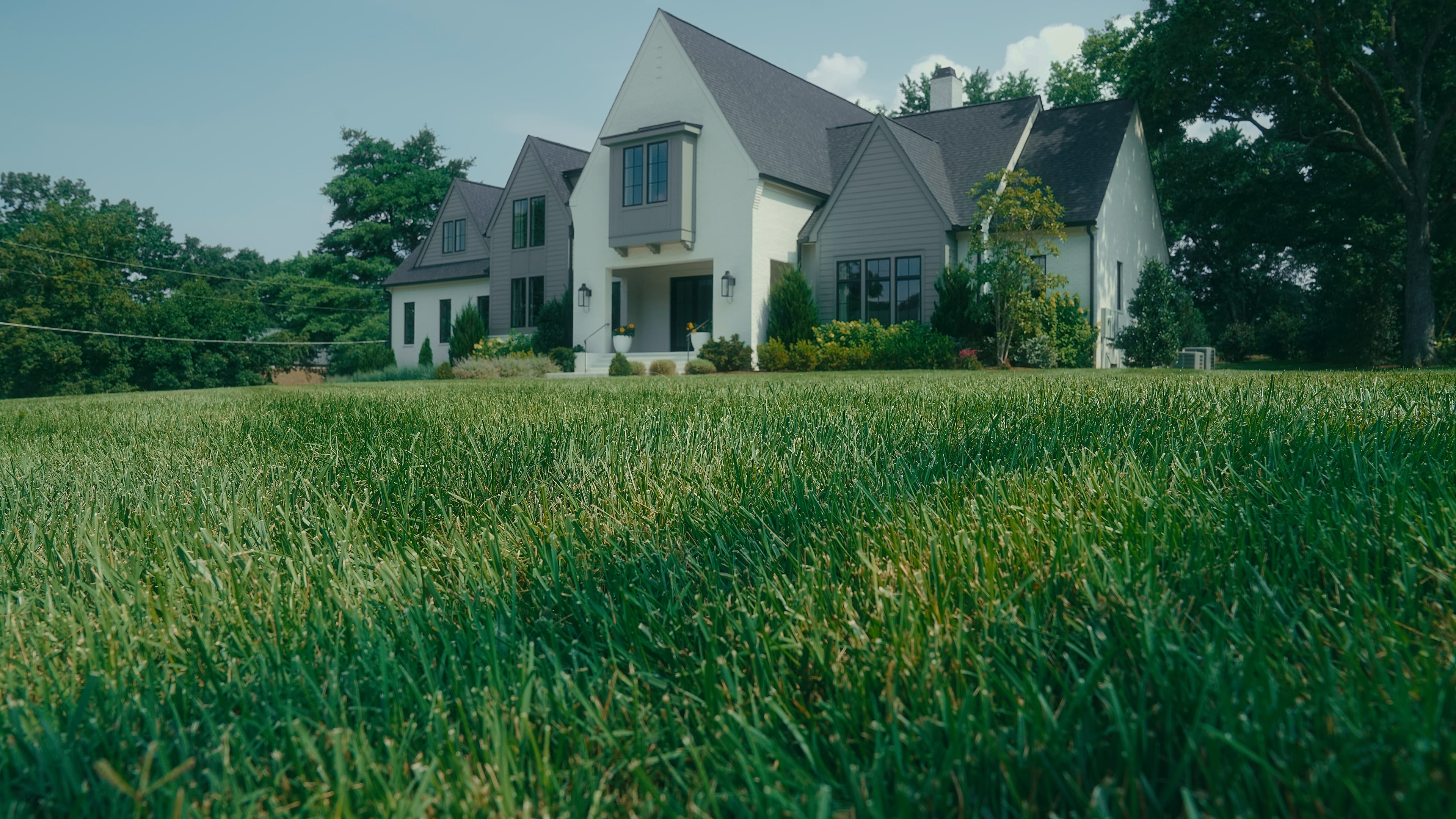
When your lawn looks like it’s on life support, it’s easy to panic. Brown patches spread, weeds creep in, the grass feels brittle underfoot, and you start wondering if all the hard work you put into your yard has gone to waste.
The truth is, most lawns can be saved if you approach them methodically. Think of yourself less like a firefighter putting out flames and more like a coach rebuilding a team after a tough season. With patience, strategy, and the right actions in the right order, even the roughest patch of turf can bounce back stronger than before.
Step One: Pause and Assess
Rescuing a lawn doesn’t start with tools or products—it starts with perspective. Before you touch the mower or drag out the sprinkler, spend time simply walking your yard. Look closely at the color and texture of the grass. Is it truly dead, or just dormant from heat or drought? Dormant grass will have brown blades on top, but tug gently and you’ll feel the roots still gripping the soil. Dead grass, by contrast, pulls up easily like old carpet and leaves behind bare dirt.
While you’re out there, notice the soil beneath your feet. Does it feel rock-hard and compacted, resisting the push of a screwdriver? Or does it feel spongy, thick with thatch and moss? Are there spots where water collects after rain, or areas that dry out faster than the rest? Make mental notes—or better yet, jot things down. This step might feel slow, but remember: when the lawn is in crisis, rushing is what gets people into more trouble. A calm, honest assessment gives you the roadmap forward.
Step Two: Rethink Mowing
When grass is weak, the way you mow can either nurse it back to health or push it over the edge. If your instinct is to keep cutting as usual, resist it. Mowing puts stress on grass, and stressed lawns don’t need a weekly buzz cut.
Instead, think of mowing during recovery as gentle maintenance. Raise your mower blade so you’re leaving the grass taller than usual—three to four inches for most cool-season grasses. Those extra inches help shade the soil, keep roots cooler, and slow down evaporation. Always use sharp blades so you’re slicing cleanly instead of tearing, and never cut off more than one-third of the grass blade at once. If your lawn is in the middle of a heatwave or severe drought, it’s okay to skip mowing altogether until conditions improve.
This shift in mindset—treating mowing as support instead of control—echoes that video reminder: pause, adjust, and do less, not more, until your lawn has strength to handle it.
Step Three: Heal the Soil First
The visible part of the lawn is only half the story. Beneath the surface, the soil often holds the real reasons your grass is struggling. Compaction, thatch, and uneven surfaces all make it harder for roots to thrive.
Start by removing what’s suffocating the lawn. Rake away excess thatch and debris. If moss has taken over in shaded areas, scrape it out and make note of whether those spots need more light or better drainage. Once the lawn can breathe, it’s time to address compaction. Aeration—whether with a rented machine or a manual core aerator—punches small holes in the soil so air, water, and nutrients can reach the roots. It looks a little messy at first, but those plugs of soil left behind are a sign your lawn can finally start healing.
Get a free soil test when you request an estimate from us!
If your yard feels uneven underfoot, level it with a thin topdressing of soil or compost. This not only smooths the surface but also improves the soil structure itself. Remember, rushing to spread seed without preparing the soil is like painting over a crumbling wall. The foundation must come first.
Step Four: Bring Back Life with Seed and Aeration
Once the soil is prepared, the next step is to restore living growth through overseeding, paired with aeration to maximize success. Overseeding fills in bare or thinning spots, thickens your lawn, and helps crowd out weeds. The key is getting seed-to-soil contact, and that’s where aeration becomes your best ally.
Core aeration, which removes plugs of soil from the lawn, creates open channels for seed, air, water, and nutrients to penetrate deeply. It’s especially useful in compacted areas where roots struggle. Liquid aeration, on the other hand, uses a soil-loosening solution that reaches deeper and is easier to apply across large spaces. Both methods reduce compaction and set the stage for stronger root systems.
Instead of thinking of overseeding as just scattering seed, think of it as a partnership: seed plus aeration. Together, they give your lawn a fresh start, making it more resilient against stress in the future. Just remember—patience is key. New seed takes time to germinate, and the benefits of aeration unfold gradually as roots expand and soil structure improves.

Step Five: Water with Intention
Water is often the make-or-break factor in lawn recovery. But more water doesn’t always mean better results. In fact, frequent shallow watering can train roots to stay near the surface, leaving grass vulnerable.
The goal is deep, consistent moisture. Water in the early morning so less evaporates in the heat of the day, and aim for about one inch per week, delivered in one or two deep soakings rather than daily sprinkles. This encourages roots to grow deeper, where they’re protected from temperature swings. If your lawn is dormant from drought, water just enough to keep roots alive—about half an inch every two to three weeks—until cooler weather returns.
Think of watering as a rhythm, not a reaction. Resist the urge to grab the hose at the first sign of wilting. Step back, look at the forecast, and water in a way that supports long-term resilience.
Step Six: Feed When It Counts
It’s tempting to dump fertilizer on a struggling lawn, but timing is everything. Fertilizer only helps when the grass is actively growing. Feeding dormant or dead grass is like serving a full meal to someone who’s asleep—they’re not taking it in.
Once you see new growth or once conditions improve, apply a balanced fertilizer suited to your grass type. Organic options like compost or natural lawn boosters can be particularly effective during recovery because they improve soil health as well as feeding the grass. Apply lightly and evenly, following instructions carefully—too much can burn the lawn and undo your progress.
This step reinforces the idea of patience. You’re not feeding for an overnight transformation. You’re setting the stage for steady recovery, one nutrient at a time.
Step Seven: Keep Weeds and Disease in Check
As grass struggles, weeds see their chance to move in. Disease can also take hold in damp or stressed conditions. The key is vigilance without overreaction.
Walk your lawn regularly and pull small weeds before they spread. If a section looks discolored or feels spongy, it may be fungal—address it early with the right treatment, but also check whether poor drainage or overwatering is contributing to the problem. Adjusting your care routine often solves the root cause.
Don’t aim for perfection during recovery. A few weeds won’t destroy your efforts, and a little discoloration doesn’t mean failure. Focus on steady improvement, not a flawless carpet of green.

Step Eight: Think Long-Term and Stay Calm
A lawn in crisis doesn’t recover in a weekend. It may take weeks, even a full season, before you see dramatic change. That’s normal. Grass grows on its own timeline, not ours.
The key is to stick with your plan: mow high, water deeply, feed wisely, and keep the soil healthy. Resist the urge to chase quick fixes or pile on treatments just because you’re anxious. Remember the video’s message—calm down, step back, and trust the process.
Over time, you’ll notice subtle changes: patches filling in, blades standing taller, the color deepening from pale straw to healthy green. Celebrate those wins, however small, because they mean your lawn is on its way back.
Final Thoughts
A lawn in crisis can feel overwhelming, but the solution starts with perspective. By calming down, assessing honestly, and making a clear plan, you take control of the recovery process. Every step—adjusting mowing, improving soil, reseeding, watering with purpose, feeding at the right time—works together like gears in a machine.
Most importantly, patience and consistency will always beat panic and overreaction. If you follow the simple rhythm of observe, adjust, and maintain, your lawn will come back not just alive, but healthier and more resilient than before.
So the next time you step outside and see your grass looking worse for wear, remember that simple advice: calm down, step back, and get your game plan.
How Pure Turf Can Help
At Pure Turf, we specialize in taking care of lawns all year round. Our proven lawn care programs can give you a healthy, thriving lawn no matter the season. Whether you have warm-season grass or cool-season grass, our team is ready to help.
Our Basic, Essential, and Elite programs include everything your lawn needs, from fertilization and weed control to insect treatments and aeration. We also offer lawn disease prevention and overseeding benefits to ensure your lawn stays healthy during the colder months.
With a Pure Turf proven program, you will see results within weeks and a full transformation within 8-12 months. Our programs include the following treatments:
- Fertilizer & Weed Control
- Lawn Disease Prevention
- Insecticide Treatments
- Aeration & Overseeding Benefits
The following services can be added on to your Basic program:
- Lawn Disease Prevention (included in an upgrade to Premium)
- Mosquito and Tick Control
- Tree & Shrub Health
Plus, our services include a liquid soil conditioner that improves your lawn’s health year-round. If you’re looking for more specialized care, we can also add mosquito and tick control, as well as tree and shrub health treatments.
Request a free estimate today and let us help you get your lawn ready for winter. We’re here to make sure your lawn is healthy, vibrant, and ready to shine in the spring.




